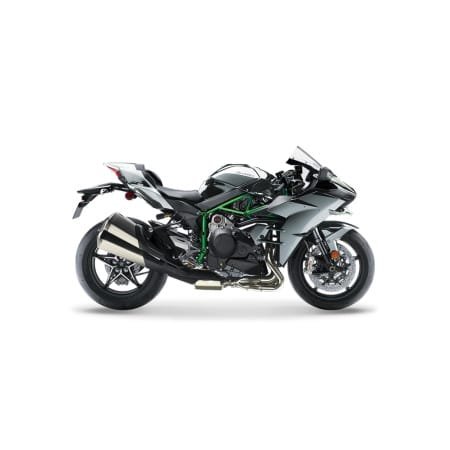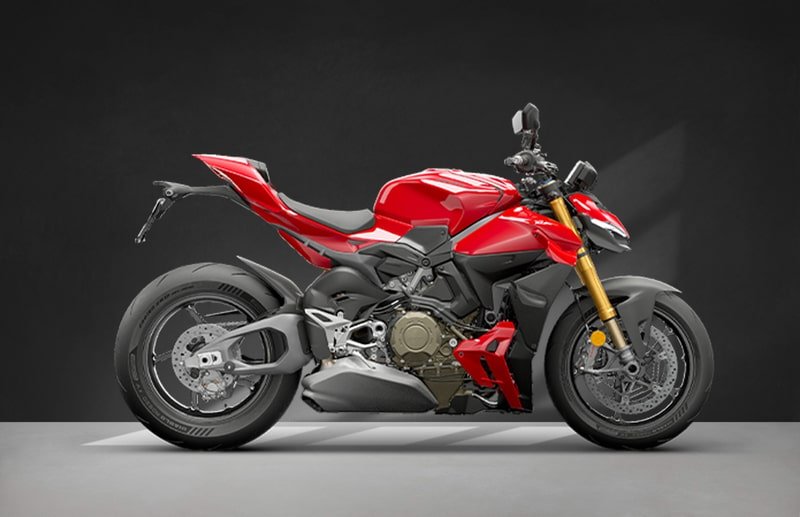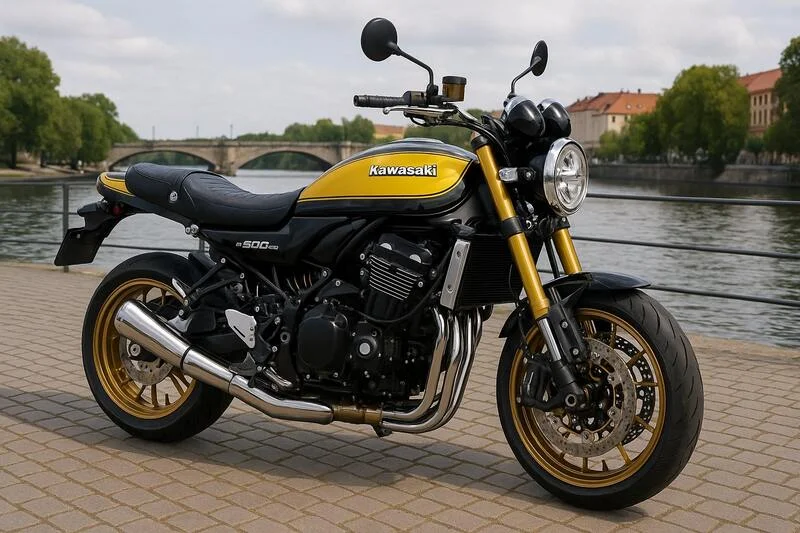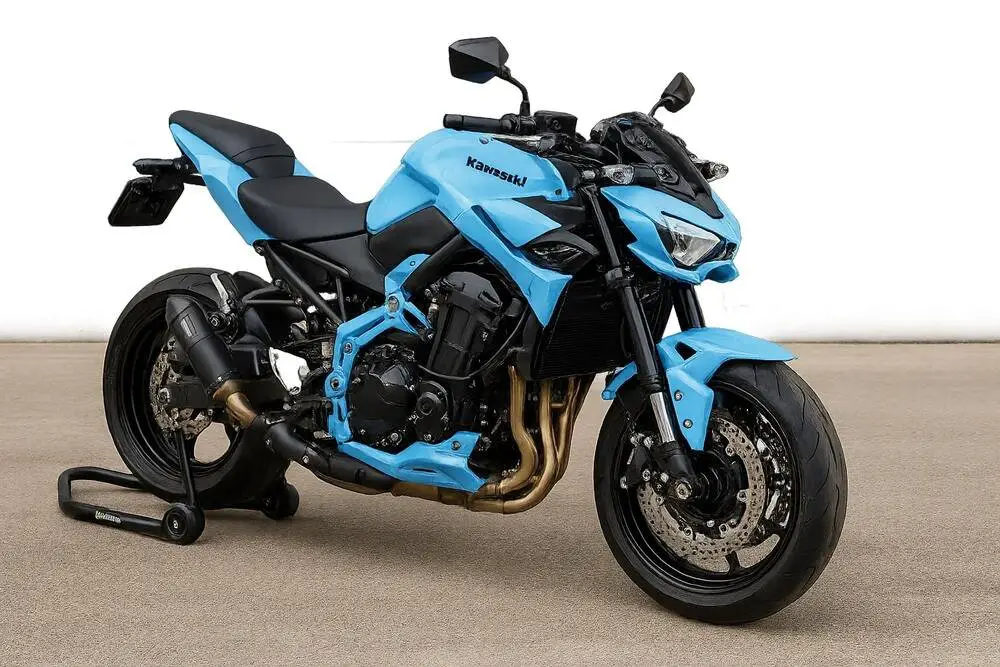Kawasaki Ninja H2 Review: 17 Jaw-Dropping Reasons It's a Supercharged Powerhouse
Introduction to the Kawasaki Ninja H2
The Kawasaki Ninja H2 isn’t just another superbike—it’s a supercharged marvel of engineering that pushes the boundaries of speed, technology, and design. Since its debut, this bike has consistently stunned enthusiasts with its power, innovation, and futuristic aesthetics.
What Makes the Ninja H2 So Special?
What sets the Ninja H2 apart is its integrated supercharger, which provides explosive acceleration unmatched by naturally aspirated engines. It’s not just built for speed—it's a statement of precision engineering and performance art.
Brief History and Evolution
First launched in 2015, the Ninja H2 was born from Kawasaki’s aerospace and motorsports divisions. Over the years, it has seen various improvements in electronics, design, and performance, culminating in an elite machine that’s respected both on the street and on the track.
Design and Aesthetics
Aerodynamic Styling
The Ninja H2 boasts an aggressive, jet-inspired design with sharp lines and winglets that offer better downforce at high speeds. Its mirror-coated matte sparkle black finish is unique, giving it a sleek, premium look.
Color Options and Graphics
Kawasaki offers limited yet striking color schemes. From mirror-coated black to metallic graphite grey, each color is designed to reflect the premium, high-speed persona of the H2.
Build Quality and Materials
Crafted with a trellis frame, the bike provides both rigidity and lightness. Premium materials, including carbon fiber components in the Carbon edition, showcase Kawasaki’s commitment to quality.
Engine and Performance
Supercharged Inline-Four Engine
At the heart of the Kawasaki Ninja H2 is a 998cc supercharged inline-four engine—an engineering feat producing heart-pounding acceleration.
Horsepower, Torque, and Top Speed
With 228 horsepower (231 with RAM air) and 141 Nm of torque, the H2 rockets to a top speed of over 330 km/h (205 mph), placing it among the fastest production motorcycles ever built.
Acceleration and Handling
The Ninja H2 accelerates from 0-100 km/h in under 3 seconds. Despite its raw power, the bike remains controllable thanks to advanced electronics and a balanced chassis.
Ride and Handling Experience
Suspension and Braking System
The bike features a KYB AOS-II fork and Öhlins rear suspension, providing superior damping and control. Braking is handled by Brembo Stylema monobloc calipers, ensuring confidence under hard stops.
On-Road vs Track Performance
Whether carving canyon roads or tearing up the racetrack, the H2 performs brilliantly. It delivers a track-worthy experience without sacrificing road compliance.
Advanced Technology Features
TFT Display and Connectivity
The Ninja H2 comes with a TFT full-color display that includes smartphone connectivity via Rideology The App, keeping riders connected on the go.
Riding Modes and Traction Control
With multiple power modes, Kawasaki Traction Control (KTRC), and quickshifter, the H2 can adapt to any riding style or condition.
Kawasaki Intelligent Anti-Lock Braking System (KIBS)
The KIBS provides smooth braking with precise ABS intervention, especially useful when cornering aggressively.
Comfort and Ergonomics
Seating Position and Rider Comfort
Despite being a superbike, the H2 offers a surprisingly ergonomic riding position. The seat is padded, and the tank shape allows for a comfortable grip, even at high speeds.
Handlebar and Control Layout
The clip-on handlebars and thoughtfully placed controls enhance rider feedback, giving a confident, connected feel.
Sound and Exhaust System
Akrapovič Exhaust Option
The optional Akrapovič exhaust improves both performance and the sonic character of the bike, adding a throaty growl to the already menacing machine.
The Distinctive Sound of the H2
That supercharger whine is unmistakable—almost like a fighter jet preparing for takeoff. Combined with its exhaust note, it creates an unforgettable auditory experience.
Fuel Efficiency and Tank Capacity
Real-World Mileage
While not designed for economy, the H2 averages around 15-18 km/l (35-42 mpg) in normal riding conditions.
Fuel Tank Specs
A 17-liter fuel tank provides decent range, especially for spirited weekend rides or occasional touring.
Safety Features
Cornering Management
With IMU-enhanced electronics, the H2 offers enhanced cornering performance by adjusting power and braking dynamically.
ABS and Launch Control
Advanced ABS and launch control ensure that you start quickly and safely, especially useful for drag racing scenarios.
Maintenance and Reliability
Service Intervals
Kawasaki recommends regular service every 6,000 kilometers (or 3,750 miles), with oil changes, chain lubrication, and inspection of electronics being key. The supercharger system requires periodic inspection but is surprisingly durable when maintained properly.
Common Issues and Durability
Despite its complexity, the H2 is known for its rock-solid reliability. Some owners report minor issues like sensor recalibration or clutch plate wear under extreme use, but major faults are rare. Proper upkeep ensures long-term durability.
Comparison with Competitors
Kawasaki Ninja H2 vs Suzuki Hayabusa
| Feature | Kawasaki Ninja H2 | Suzuki Hayabusa |
|---|---|---|
| Engine | 998cc supercharged | 1340cc NA |
| Horsepower | 228 hp | 190 hp |
| Top Speed | 205+ mph | ~186 mph |
| Tech Features | Advanced electronics, KTRC, KIBS | Moderate tech upgrades |
| Verdict | Pure power and innovation | Comfortable speed cruiser |
Ninja H2 vs Ducati Panigale V4
| Feature | Kawasaki Ninja H2 | Ducati Panigale V4 |
|---|---|---|
| Engine | Inline-four supercharged | V4 naturally aspirated |
| Power Delivery | Instant, high torque | Smooth, race-style |
| Tech | Cutting-edge electronics | Race-proven tech |
| Verdict | Ultimate street weapon | Track-focused precision |
Variants and Editions
Ninja H2 Carbon
This premium variant adds carbon fiber components, giving it a lighter, racier feel with exclusive badging and a refined design.
Ninja H2R (Track-only Beast)
With over 300 horsepower, the H2R is not street-legal but is the fastest production motorcycle ever made. It’s a machine strictly for the closed circuit and professional riders.
Special Edition Models
Occasionally, Kawasaki releases limited-edition trims featuring unique graphics, color schemes, or commemorative badges—making them collector’s dreams.
Ownership Costs
Price and Insurance
The Ninja H2’s base price sits around $30,000 USD, with insurance rates on the higher side due to its category. However, it's justified for the superbike experience it offers.
Spare Parts and Service Costs
Parts are premium, especially the supercharger and electronics. Service costs are moderate to high, but longevity offsets frequent maintenance if you follow Kawasaki’s schedule.
User Reviews and Testimonials
Rider Experiences
Owners rave about the H2’s jaw-dropping acceleration, futuristic design, and how it makes every ride feel like an event. One rider said, “It’s like holding a lightning bolt on two wheels.”
Pros and Cons from Real Owners
Pros:
-
Unmatched power and performance
-
Stunning design
-
Advanced safety features
Cons:
-
Expensive maintenance
-
Not ideal for beginner riders
-
High insurance premiums
Modifications and Aftermarket Upgrades
Popular Mods
-
Exhaust systems (Akrapovič, Yoshimura)
-
ECU tuning and remapping
-
Upgraded brake kits and levers
Performance Enhancements
Many riders add aerodynamic kits, nitrous systems, or track-tuned suspension to squeeze even more adrenaline out of their H2.
Where to Buy and Availability
Authorized Dealerships
Your best bet is to go through Kawasaki Power Dealers, who offer test rides, official warranties, and financing.
Used vs New Purchase Options
Buying used can save money but make sure the bike has low mileage, complete service records, and no signs of abuse. New models come with the latest updates and peace of mind.
Frequently Asked Questions (FAQs)
1. Is the Kawasaki Ninja H2 street legal?
Yes, the standard H2 is street legal. However, the H2R version is for track use only.
2. What is the top speed of the Ninja H2?
The Ninja H2 can exceed 205 mph (330 km/h) with proper conditions and RAM air.
3. Is the Kawasaki Ninja H2 good for beginners?
No. The H2 is extremely powerful and is best suited for experienced riders due to its sheer speed and responsive controls.
4. What makes the Ninja H2 different from the H2R?
The H2R has no headlamps, turn signals, or emissions equipment, and features over 300 horsepower. It’s track-only, while the H2 is street legal.
5. Does the Kawasaki Ninja H2 come with a warranty?
Yes, it includes a limited factory warranty, and you can extend it with Kawasaki’s Good Times Protection Plan.
6. How often does the supercharger need maintenance?
While robust, it should be checked during major service intervals, particularly if the bike is ridden aggressively.
Conclusion
The Kawasaki Ninja H2 is not just a motorcycle—it’s a revolutionary machine that redefines what a production superbike can be. With supercharged power, cutting-edge tech, futuristic design, and racing DNA, the H2 is made for those who want nothing less than extraordinary.
Whether you’re a collector, thrill-seeker, or tech aficionado, the Ninja H2 will deliver an experience that few machines can match. Kawasaki’s engineering masterpiece proves that dreams of speed and precision can come to life on two wheels.




